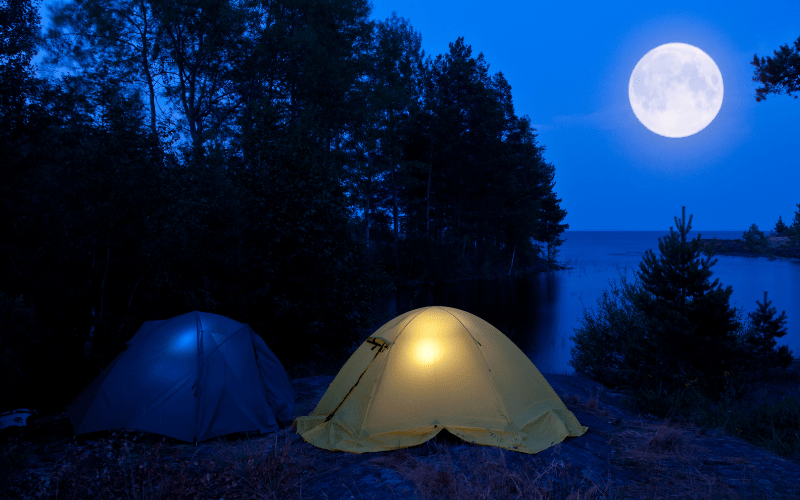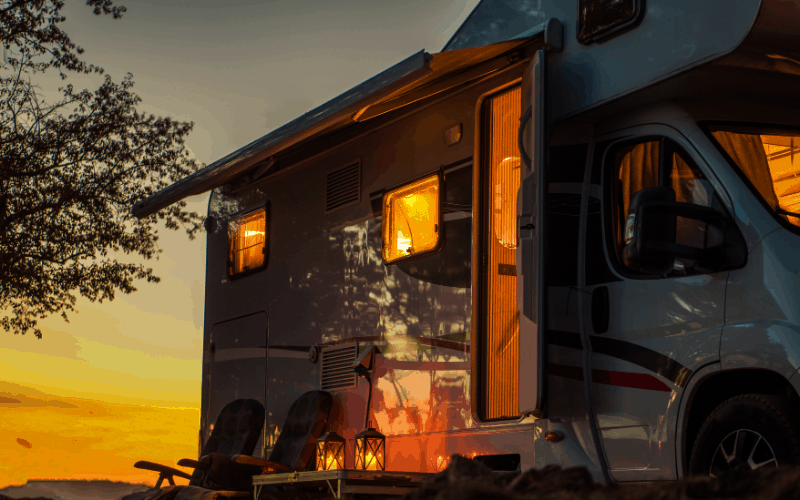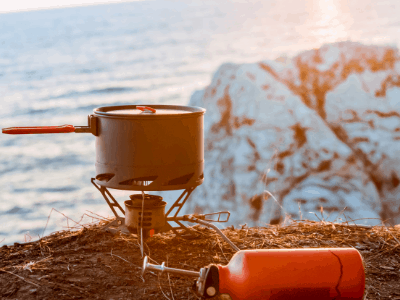✅ How to make electric hookup for camping
*Always get a qualified electrician to help you with making an electric hookup when you’re camping. This post is for interest purposes only.
Camping is fantastic for the nomadic lifestyle, but everyone needs to stay connected to modern tech for one reason or another and there’s a way you can, so finding out how to make an electric hookup for camping might be something you’ll want to know.
Having access to electricity and all the amenities of social media will be heavily reliant on what type of camping you’re adventures entail.
For instance, heading out in a campervan capable of holding a leisure battery will do the trick (but you’ll need to know how to charge and how long it will function for). Otherwise, you’ll need to head to a dedicated campsite or get creative when wild camping.
At Camping Cubs, we like to answer all the adventure-related questions and in this article, we’ll be touching on how to get electricity in a tent all the way through to the best practices so you can continue to make the most out of every brew, light and minute on the internet.
Also see: How to use a leisure battery whilst you’re camping

✅ How do you get electricity in a tent?
We mentioned having a leisure battery for access to electricity in a camper. But when it comes to a tent, there’s not really any specific or obvious means of getting internet.
Here in the UK, we have plenty of campsites and dedicated areas for pitching up and enjoying a night under the stars with friends and family.
Luckily, these dedicated areas also have electricity access points for us to make use of. All you need to do is book a space at your ideal campsite (ensuring you check-up on their facilities through their website) and rock-up with your cable to connect.
However, if you’re escaping to the unknown for a wild camping adventure, you’ll need to take a solar panel for light load electricity access.

✅ What do you need for electric hook up when camping?
When camping, you’ll either need just the male-female cable for a campervan or a male-female cable and a mobile mains unit (MMU) with a built-in residual current device (RCD) for a tent.
When you set-up camp, you should always sort your end of the circuit, first. This means connecting the female end of the cable to your unit (either your camper-van or your MMU) before heading outside to connect the male end of the cable to the safety checked power bollard supplied by the campsite.
✅ What plugs do campsites use?
Each campsite will have power bollards dotted around the green with easy access to plots. With this, the electricity cables run underground to the mains. The power bollard will have its own RCU and a miniature circuit breaker (MCB) to help prevent against overloading.
Most campsites will use a 230V electricity supply which can be accessed by using a 10- Amp or 16-Amp lead.
Then, when you connect the lead to your portable and temporary home for the evening, you’ll either have a fly lead converter (which changes the head to provide one available British standard plug socket), or you’d use your MMU, or you’d connect to your camper-van (with its own converter and distribution console) allowing you to access electricity through various sockets in the camper.

✅ Getting electricity when you’re camping
When it comes to using your electric hook-up for camping, there are a few rules (and some unwritten rules) you should abide by. This helps to ensure you maintain connection to the mains, you have a secure supply, your usage is safe and you remain economically friendly, too.
Safety First
It’s important to know that, while your campsite has a duty to ensure their campers are safe and their power bollards are checked at regular intervals, it’s your job to ensure your connections are safe as well as your practices.
This includes confirming you’re not going to overload the mains and all items conform to the British electrical safety standards.
Hang the Socket
This one comes down to a little bit of common sense. To get electricity when camping, you want to make sure there is no danger about first. And, when it comes to tents, you’re not necessarily in a water-proof area (especially if the tent is old or there isn’t a footprint underneath).
With this in mind – and knowing that water and electricity certainly don’t mix – you need to find a way to hang or clip your MMU electricity sockets from the frame of the tent and off the ground.
Use One at a Time
While you may be tempted to plug everything in, get things going and start living your life all at the same time as you would at home, external electric hook-up for camping can’t be treated as such.
The best way to use a hook-up unit is to make sure you only use one item at a time. Such as boiling the kettle and making a brew before deciding to dry your hair.
Line-Up the Voltage
Finding out which appliances you can use at any given time calls for a quick calculation. Luckily, it’s as easy as this; Watt = Voltage x Amps.
The device you want to use (such as a kettle) is measured in Watts. The power supply is the Voltage and the electrical hook-up for camping is in Amps.
So, to find out which appliances you can use, you’ll need to multiply the voltage of the power bollard (typically 230V but check with the campsite) by the ampere of the hook-up. You can check your cables, RCU and MMU for the ampere of the hook-up and they can vary between 5amps, 10amps and 16amps).
For example, 230V multiplied by 16A means you can power 3680W (or, 3.6kW) appliances.
Turn Everything Off
Making sure everything is properly switched off and disconnected is vital to ensuring nothing will surge, overload, become dampened or break while not in use (or worse, while you’re sleeping).
In fact, not being careful or switching your electricity supply off is one of the biggest causes of accidental fire when camping.
So, first, switch off the RCD, then disconnect the cable from the power bollard and, finally, tidy the cable from your camping quarters.
It’s really important you get a qualified electrician to get your electric hookup set up properly when you’re camping. Ask your campsite to recommend a local person when you arrive.
You can read more here about using electricity safely while you’re camping.



